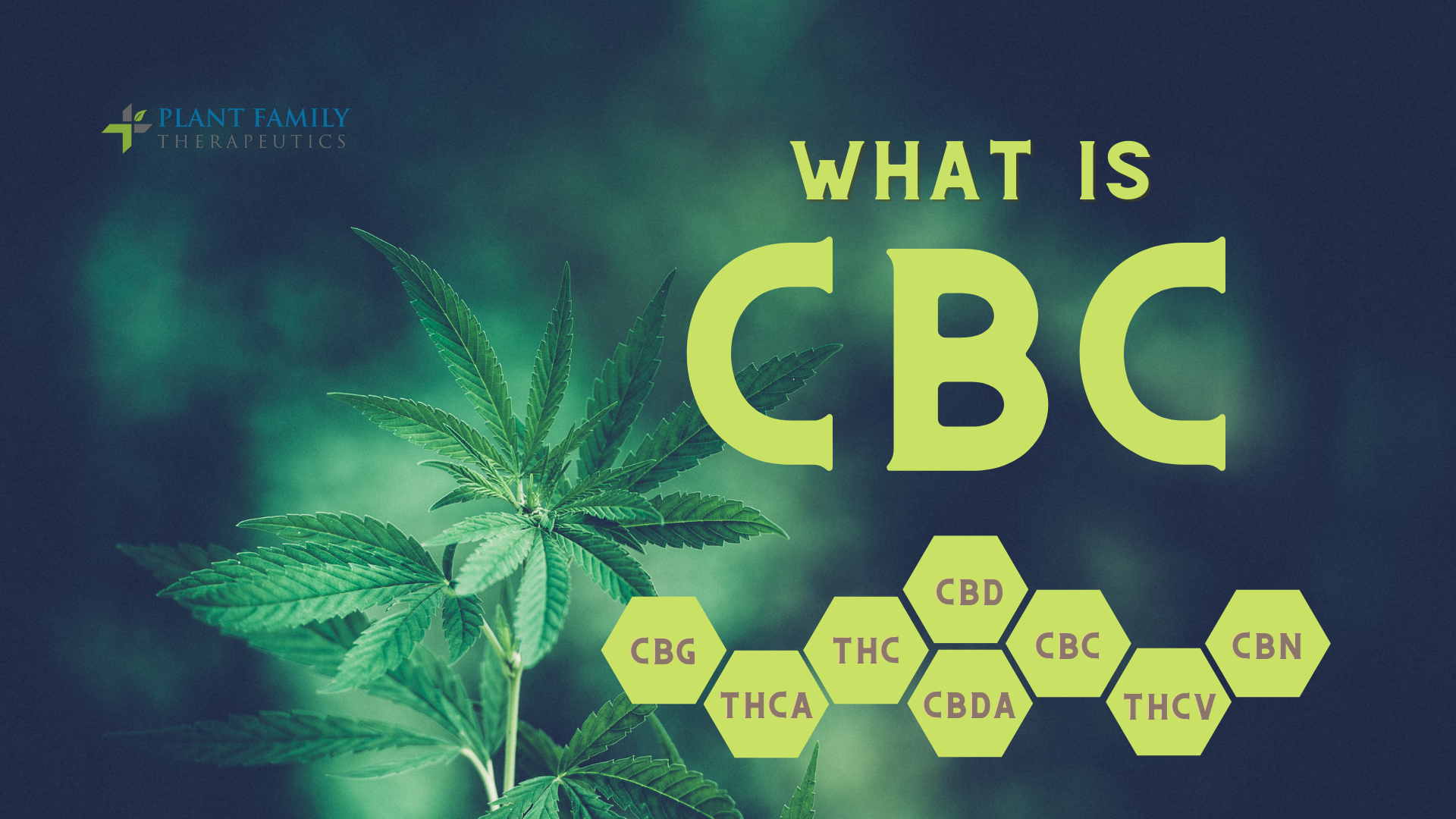This website requires you to be 21 years or older to enter. Please confirm your age below to continue.

June 2022 by Sandy Yanez
Discovered in the 1960s, Cannabichromene or CBC is a major cannabinoid like THC and CBD. CBC is the third most prominent cannabinoid found in the cannabis plant. Though this cannabinoid is not as well understood as THC and CBD, CBC has shown to be a significant component in the treatment of inflammation, reduction of pain, and the ability to promote new brain cells.
CBC works differently than other cannabinoids. Most cannabinoids interact with CB1 and CB2 receptors in the endocannabinoid system (ECS) and help with increasing the production of our endocannabinoids (anandamide and 2-AG). CBC does this as well but also works with receptors for inflammation and pain response. These receptors are possibly being considered the third cannabinoid receptor, TRPV1 receptors. Research has shown that CBC has a higher chance of interacting with receptor sites like TRPV1 than CBD.
CBC does not affect your thought process as THC can, meaning it is not psychoactive and won’t give you a euphoric feeling. CBC works well with other cannabinoids like THC, CBD, CBG, and CBN to boost their anti-inflammatory and other therapeutic effects. CBC is a potent anti-inflammatory by itself, and studies show it may be more useful than CBD as an antidepressant. Furthermore, CBC may be up to ten times more potent than CBD for the treatment of stress and anxiety.
Here are a few more benefits of CBC:
Antimicrobial – studies show CBC exhibits strong antibacterial and antifungal properties and may help fight against a variety of gram-negative and gram-positive bacteria, such as staph, E. Coli, and MRSA.
Chronic Pain – a 2011 study found CBC effectively blocked the pain associated with osteoarthritis. Another study showed that when CBC was combined with THC, it provided a far greater anti-inflammatory response than THC alone. Due to its activation of TRPV1 receptors, pain regulation was noted specifically in patients with cancer, fibromyalgia, and inflammatory bowel disease
Brain Neurogenesis – a 2013 study analyzed the effects of neural stem progenitor cells (NSPCs) on adult mice and found that CBC improves the viability of NSPCs, which are crucial for maintaining homeostasis (balance) in the brain and provide a defense against oxidative stress and neurotransmitter direction.
Antidepressant – a study by El-Alfy et. al. showed rats performed better on stress tests after receiving CBC and when taken with THC and CBD worked best for depression.
Fights Acne – CBC is great for the skin! A 2016 study found that CBC was an excellent acne inhibitor because of its anti-inflammatory properties, plus it slows down the lipid production in the sebaceous gland and reduces the rate of Arachidonic acid (AA) needed to create lipogenesis.
Anti-proliferative – CBCs anti-tumor have been relatively unknown until recently when Israeli researchers analyzed the necrotic effects of various cannabinoids on human gastrointestinal cancer cells and discovered CBC and CBG were the most effective at penetrating cancer cell membranes.
Final thoughts
CBC effects are relaxing and mood-lifting with the ability to reduce pain and regulate pain perception. CBC’s effects are complemented by the soothing anti-anxiety qualities of CBD, CBG, and THC. CBC is a lesser-known but no less outstanding cannabinoid to add to your cannabis regimen. Its non-intoxicating effects and benefits are best used with other cannabinoids like CBD, CBG, and THC. However, you can use it on its own for pain reduction and mood enhancement as well.
References
Dariš, B., Tancer Verboten, M., Knez, Ž., & Ferk, P. (2019). Cannabinoids in cancer treatment: Therapeutic potential and legislation. Bosnian journal of basic medical sciences, 19(1), 14–23. https://doi.org/10.17305/bjbms.2018.3532
El-Alfy, A. T., Ivey, K., Robinson, K., Ahmed, S., Radwan, M., Slade, D., Khan, I., ElSohly, M., & Ross, S. (2010). Antidepressant-like effect of delta9-tetrahydrocannabinol and other cannabinoids isolated from Cannabis sativa L. Pharmacology, biochemistry, and behavior, 95(4), 434–442. https://doi.org/10.1016/j.pbb.2010.03.004
Holley, J. H., Hadley, K. W., & Turner, C. E. (1975). Constituents of Cannabis sativa L. XI: Cannabidiol and cannabichromene in samples of known geographical origin. Journal of pharmaceutical sciences, 64(5), 892–894. https://doi.org/10.1002/jps.2600640546
Maione, S., Piscitelli, F., Gatta, L., Vita, D., De Petrocellis, L., Palazzo, E., de Novellis, V., & Di Marzo, V. (2011). Non-psychoactive cannabinoids modulate the descending pathway of antinociception in anaesthetized rats through several mechanisms of action. British journal of pharmacology, 162(3), 584–596. https://doi.org/10.1111/j.1476-5381.2010.01063.x
Russo E. B. (2018). Cannabis Therapeutics and the Future of Neurology. Frontiers in integrative neuroscience, 12, 51. https://doi.org/10.3389/fnint.2018.00051
Russo E. B. (2008). Cannabinoids in the management of difficult to treat pain. Therapeutics and clinical risk management, 4(1), 245–259. https://doi.org/10.2147/tcrm.s1928
Russo E. B. (2011). Taming THC: potential cannabis synergy and phytocannabinoid-terpenoid entourage effects. British journal of pharmacology, 163(7), 1344–1364. https://doi.org/10.1111/j.1476-5381.2011.01238.x
Shinjyo, N., & Di Marzo, V. (2013). The effect of cannabichromene on adult neural stem/progenitor cells. Neurochemistry international, 63(5), 432–437. https://doi.org/10.1016/j.neuint.2013.08.002